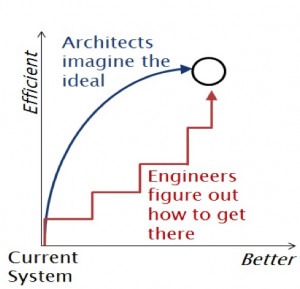[vc_row type=”in_container” full_screen_row_position=”middle” scene_position=”center” text_color=”dark” text_align=”left” top_padding=”30″ overlay_strength=”0.3″ shape_divider_position=”bottom”][vc_column column_padding=”no-extra-padding” column_padding_position=”all” background_color_opacity=”1″ background_hover_color_opacity=”1″ column_shadow=”none” column_border_radius=”none” width=”1/1″ tablet_text_alignment=”default” phone_text_alignment=”default” column_border_width=”none” column_border_style=”solid”][vc_column_text][nectar_dropcap color=”#3452ff”]T [/nectar_dropcap]he clinical trials process needs to be modeled. One of our first lessons was about the need to draw a map of the process showing the interdependence and inter-reaction of stakeholders. While our sights are set higher than this, mapping the process of clinical trials enables us not only to understand the system better, but also focus on ways to improve it. Moreover, the first step to developing an analytical systems model is to diagram the stakeholders, their objectives and constraints, and how they interact with each other.[/vc_column_text][/vc_column][/vc_row][vc_row type=”in_container” full_screen_row_position=”middle” scene_position=”center” text_color=”dark” text_align=”left” top_padding=”30″ overlay_strength=”0.3″ shape_divider_position=”bottom”][vc_column column_padding=”no-extra-padding” column_padding_position=”all” background_color_opacity=”1″ background_hover_color_opacity=”1″ column_shadow=”none” column_border_radius=”none” el_class=”text-center” width=”1/1″ tablet_text_alignment=”default” phone_text_alignment=”default” column_border_width=”none” column_border_style=”solid”][image_with_animation image_url=”7148″ alignment=”” animation=”Fade In” img_link_large=”yes” border_radius=”none” box_shadow=”none” max_width=”100%”][vc_column_text]Clinical trials modeling workshop. MODL Director, Sauleh Siddiqui (center) listens as a team member discusses a conceptual diagram[/vc_column_text][/vc_column][/vc_row][vc_row type=”in_container” full_screen_row_position=”middle” scene_position=”center” text_color=”dark” text_align=”left” top_padding=”30″ overlay_strength=”0.3″ shape_divider_position=”bottom”][vc_column column_padding=”no-extra-padding” column_padding_position=”all” background_color_opacity=”1″ background_hover_color_opacity=”1″ column_shadow=”none” column_border_radius=”none” width=”1/1″ tablet_text_alignment=”default” phone_text_alignment=”default” column_border_width=”none” column_border_style=”solid”][vc_column_text]
Here is where having architects and engineers working together has proven to be lucrative. As an engineer, I like to build from the bottom up. Understanding the individual components of the system is essential before I can figure out the best way to represent it as a whole. Architects, I have found, are dreamers. They start with a blank page, and work froModeling-Paradigms-CTm the top-down, looking at the system in all its glory and zeroing in on the specifics. These two different modeling paradigms in our group have lead to many arguments, but also incredible insights.
One significant advantage of analytical models is that they can provide an unbiased view of the system. Of course, this means putting in unbiased information and starting with inclusiveprinciples. With architects, engineers, policy analysts, conversations with stakeholders, and a myriad of strategic advisers there to guide us, we are making sure our models give us answers that are relevant and fair. We also know that models are meant to inform decisions and not make them. For example, we have started looking at the flow of money between stakeholders through the system of drug development and clinical trials. This has given us a perspective from purely economic terms where the system can work better. In the upcoming weeks, we will be developing a systems-based equilibrium model by incorporating ideas from microeconomics, game theory, and optimization. The output from the model will help guide the stakeholders on different interventions that can improve the system, rather than tell them exactly what they should do.
Finally, in the spirit of Alfréd Rényi, we seek to be machines that can turn coffee into solutions.[/vc_column_text][/vc_column][/vc_row]
